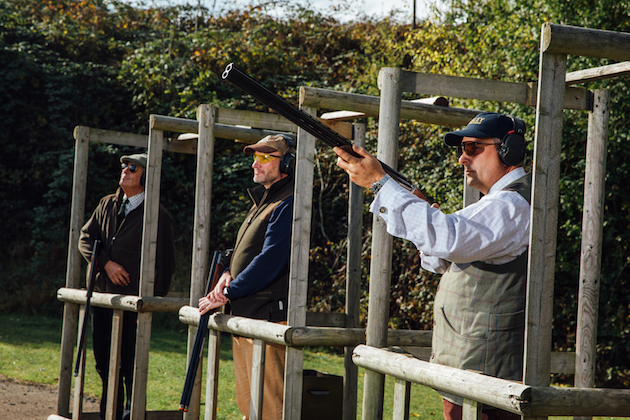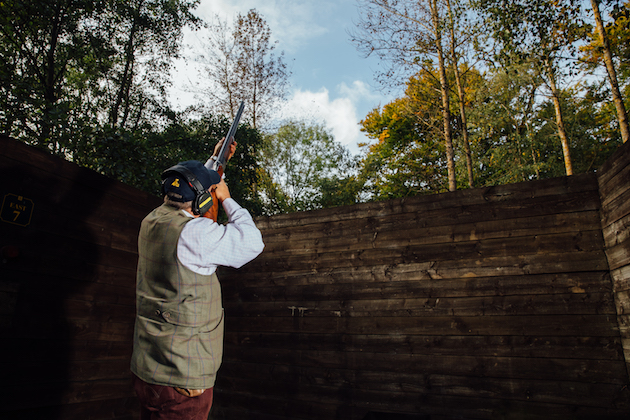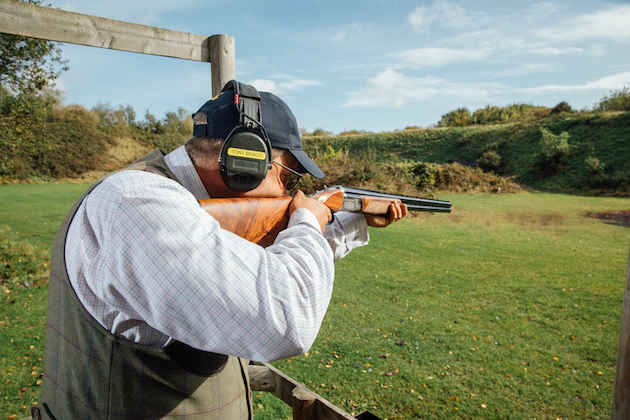A beginners’ guide to FITASC clay pigeon shooting
FITASC sporting is a great leveller. If there’s any weakness in your clay shooting technique, be it with your gun…
Win CENS ProFlex DX5 earplugs worth £1,149 – enter here

This article is not a masterclass in Sporting clays, but rather an overview to explain what it involves to encourage you to give it a go.
If you already use a shotgun, then you will probably be fine to shoot Sporting clays. You can use any calibre (12-bore max) in any configuration – side-by-side, over-and-under or semi-auto. I have seen many different guns used over the years.
There are a set number of stands to shoot from and a set number of targets. Everyone shoots the same course. The birds may be presented to you as a single target, a trailing target (same one twice), an on-report pair (call for first bird and second one is released on the report of the Gun shooting the first target) or a sim pair (both targets released at the same time). The differences in speed and distance, the variation and possibilities are endless. The skill of reading targets is vital, as are trusting your instinct and having good method, gun fit and follow-through
The standard target is 110mm in diameter; the midi target 90mm; and the mini 60mm, which often catches shooters out trying to judge its distance. Rabbit targets roll along the floor and are 110mm in diameter but have thicker edges to help stop them breaking as they travel.

Hold the gun at your first pick-up point as you visually pick up the target, mount as it comes to your hold point, swing in and shoot
The battue target is 110mm in diameter and is almost flat rather than the standard convex target. It can also be thrown at great speed and will twist on the line it is thrown. The newest target is the super-mini, which is 70mm in diameter. The standard colour of these clays is black but they do vary. The best kit to wear is casual clothes that you would wear for a country walk.
A skeet vest is handy for carrying cartridges and is tailored to make it easy to mount the gun and to move your arms. Some may have built in recoil pads.
A baseball hat will shield your eyes from the sun and protect your head from clay fragments.
Safety glasses are recommended and compulsory for CPSA (Clay Pigeon Shooting Association) competitions, with the lens colours chosen to suit the conditions.
As you go on the stand you will be shown a pair of targets. If you have been in a queue to shoot, you are expected to watch before you shoot, looking for a number of things.

The skill of reading targets is vital as it trusting your instincts
These should include where the target is coming from; which is your visual pick-up point; the best time to shoot the target and a suitable hold point for the gun. You can shoot gun up (in the shoulder) or gun down as you call for the target to be released.
You should hold the gun at your first pick-up point as you visually pick up the target, mount as it comes to your hold point and swing in your preferred method and shoot. Once you have shot the first target, move the gun to the second hold point to shoot second target. If you are shooting a simultaneous pair, you may have to compromise on where you shoot one of the targets, as you may not be able to shoot both of them at the “sweet spot”. This is why, when practising, you should be able to shoot targets at the easiest time, earlier than you want and later.
Other variations on Sporting, which all have their own rules, include FITASC (Fédération Internationale de Tir Aux Armes Sportives de Chasse). You must start the gun below a mark on your skeet vest, 25cm down from the top of your shoulder and the shooter must not move the gun until you can see the target.
Competitions are mainly shot over 100 targets made up of four layouts of 25 targets or parcours. You tend to shoot from a hoop and shoot single targets with full use of the gun and the combination of the singles as pairs.
FITASC sporting is a great leveller. If there’s any weakness in your clay shooting technique, be it with your gun…
I’ve got loads of 30g sixes left over from this year’s game shooting. Can I use these for English and…
Buyer’s brief: “I have been shooting clays for the past six months with guns hired from the shooting ground. Most…
Compaq, Sportrap and American 5-Stand are all shot from five stations in a line with a menu board in front of each stand telling you which targets are coming. Usually, five traps and shot in rounds of 25 targets. The rules differ for each one, but for a full set of rules visit the CPSA website (www.cpsa.co.uk).
Sporting clays is the most common discipline. With the more formal ones (skeet and trap) there is a higher expectation to hit a high percentage of the targets as they are consistent wherever you shoot them. Sporting is so varied that certain targets will catch you out, whether it’s a battue target or a bouncing rabbit, highlighting what you need to practise to improve each time you compete.
Get the latest news delivered direct to your door
Discover the ultimate companion for field sports enthusiasts with Shooting Times & Country Magazine, the UK’s leading weekly publication that has been at the forefront of shooting culture since 1882. Subscribers gain access to expert tips, comprehensive gear reviews, seasonal advice and a vibrant community of like-minded shooters.
Save on shop price when you subscribe with weekly issues featuring in-depth articles on gundog training, exclusive member offers and access to the digital back issue library. A Shooting Times & Country subscription is more than a magazine, don’t just read about the countryside; immerse yourself in its most authoritative and engaging publication.

